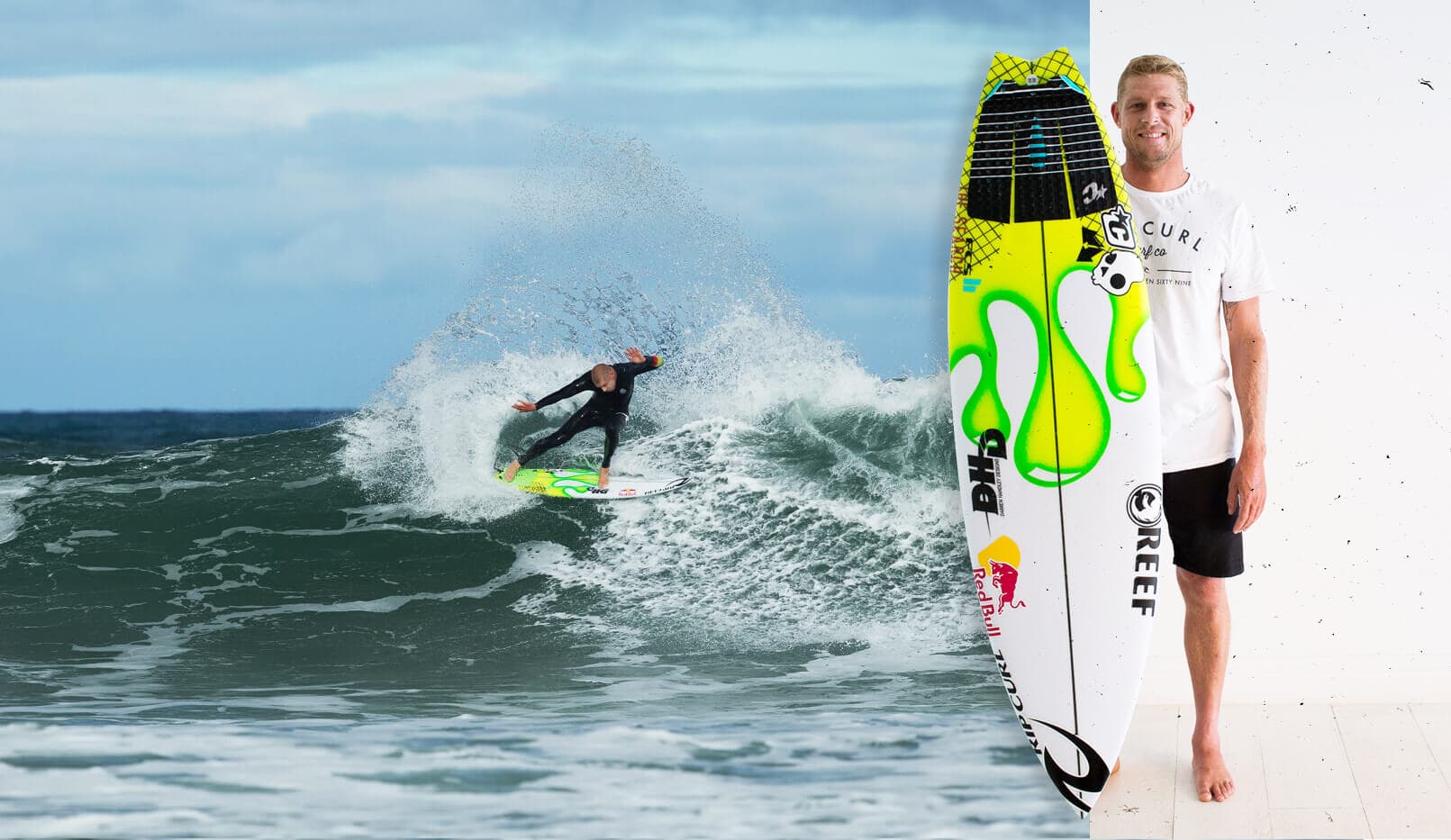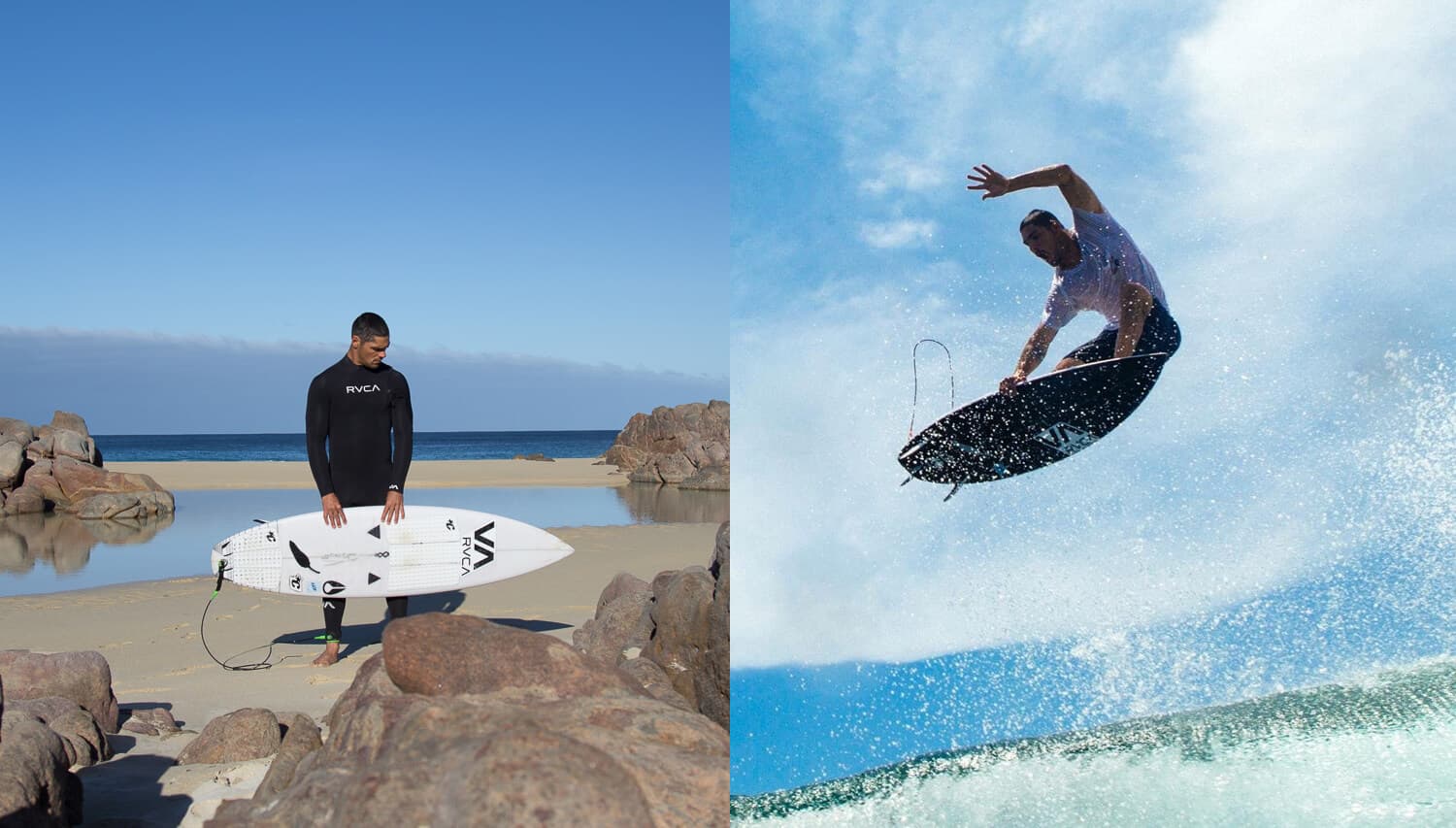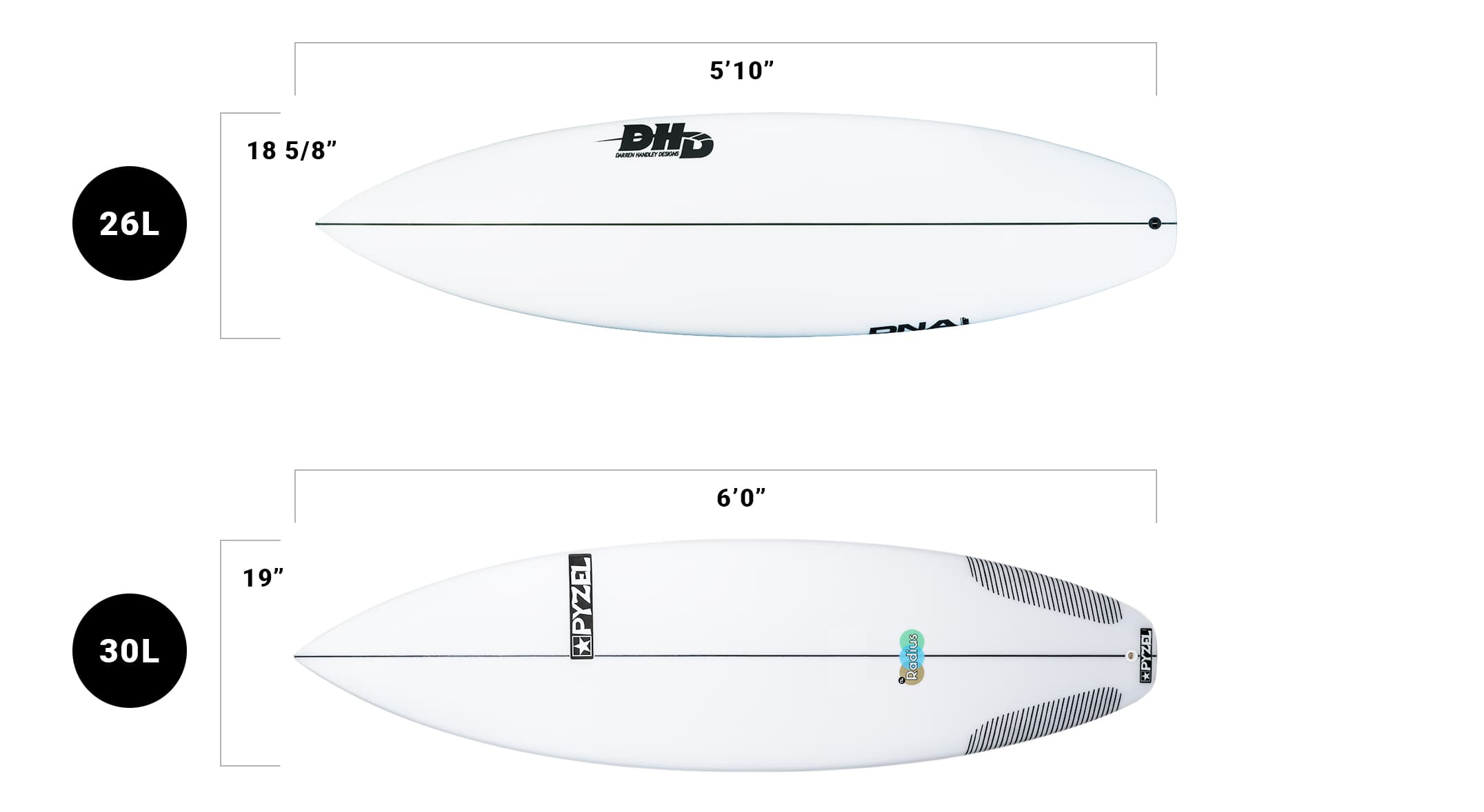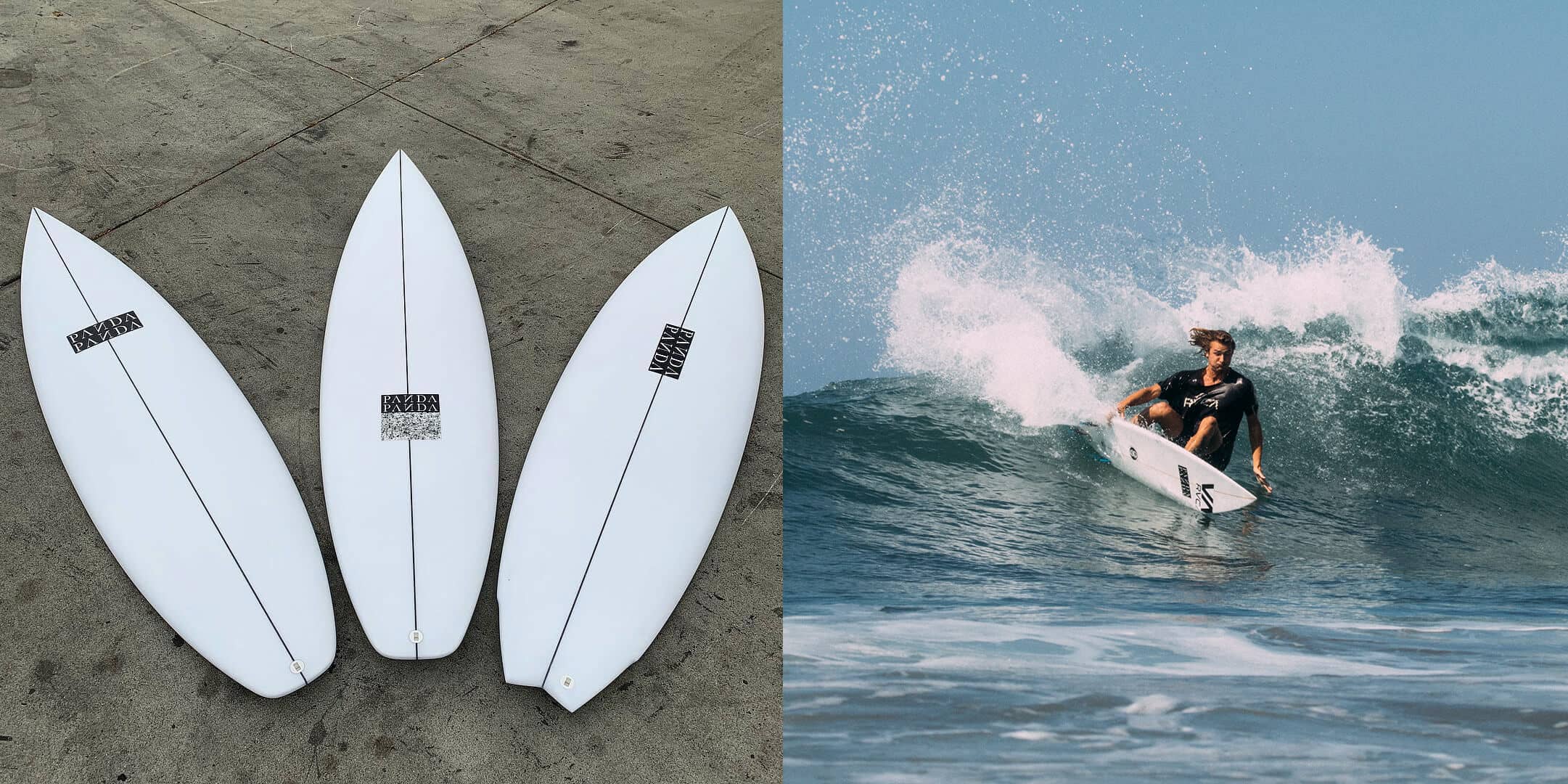How to Choose the Right Surfboard
The factors that effect your board choice
It doesn’t matter if you are a beginner, an intermediate, or even an advanced surfer - learning how to choose the right surfboard that is right for your abilities and the surf conditions is critical to your success and enjoyment of surfing.The intermediate to expert surfer is generally going to have a good idea about which board they want to take out in certain wave types, but this knowledge takes time and not everyone knows what equipment they need.
There isn’t any one surfboard that is completely perfect for one person in every kind of wave and conditions. You’re going to have to build a quiver of boards of various shapes, styles and sizes if you’re going to be surfing on a regular basis.
You’ll find that no matter what level of surfing you are at, you’re going to want to start building that dream quiver. Even Beginner Surfers after a few months will want to refine and update their board dimensions to avoid surfing the wrong board.

Mick and his faithful DHD - MF DNA.
Things to consider when choosing a board
There are a number of factors that will need consideration when you’re choosing the right surfboard on any given day:Skill Level - Are you a beginner, intermediate or advanced surfer?
Fitness Level - Even when you reach higher levels of surfing, fitness levels are going to play a role in what kind of board you’re going to surf depending on the conditions.
Height and weight - This will help to determine how much volume you would need for a particular style of board.
Wave Type - What type of waves are you going to be surfing? Hollow and fast - soft, slow crumbly?
These are all essential factors to consider and can directly impact your surfing performance.

There's no end to surfboard sizes and shapes. From left to right: Gary McNeill Concepts Mini Pip, Panda Surfboards Astro Zombie, Chilli Surfboards Black Vulture, Sharp Eye Surfboards HT2, Eye Symmetry Surfboards The Lucid Eye, DHD Black Diamond, Haydenshapes Plunder, and Pyzel Surfboards Padillac .
No. 1: What's your Skill Level?
As mentioned above, a surfer who's just starting out may only need one good beginner surfboard to get them to a level where they start to progress.
The new surfer will want a board that has plenty of volume and stability. This surfboard will be something around the 7-8 foot mark and about 22-23 inches wide and 3 inches thick for most people.
A board around this size will provide plenty of volume to ensure they can paddle into waves. A soft-top surfboard is a good option for beginners as they provide lots of float and stability while being safer in the lineup.
The added width and thickness combined with the general outline on these boards (wider, rounder nose, and wider tail) provide plenty of stability when trying to stand up on the wave.
After you get the fundamentals sorted, you can start to look into polyester and epoxy surfboards and begin to refine your preferred surfboard shape to suit your abilities and your favoured wave types. As time goes on, you'll obviously seek more progression and performance out of your shape.
To learn more about the different materials, check out our article on "Surfboard Construction Types". Once you've identified your preferred material, you then need to address the question, "What Size Surfboard Should I Buy?" based on your increased skill level.
Last but not least, learn about other surfboard intricacies, such as different surfboard outlines or the surfboard bottom contours, and how they affect varying aspects of surfing performance. Put all of these puzzle pieces together to create the final image of your ideal surfboard by using this knowledge of equipment.
No. 2: What's your Fitness Level?
Your fitness level will also play a key factor in determining what board will give you the best surfing experience. As you gain stamina and strength, your paddling will become stronger. Stronger paddles mean that you can opt for a thinner, less buoyant surfboard with more performance. You won't tire out as quickly when paddling into the lineup/waves, and you'll reap the rewards of more performance.
On the other hand, if you feel your endurance levels lack, you might seek out a higher-volume surfboard. This added buoyancy will make paddling a lot easier, helping you exert less energy. This will, however, lower the overall performance of the surfboard. The key is to find balance in your skill, fitness level, and board performance capabilities.
For example, while someone may be better at surfing today than they were ten years earlier, they may also have lost some of their stamina.
This surfer may decide that they want a board that's a little thicker and slightly wider, ensuring they have enough paddle power to avoid missing waves while increasing the longevity of their surf sessions, but one that is still a performance-oriented board.
A good compromise may be to find a slightly thicker hybrid surfboard with 60/40 rails. This means you can continue to paddle into both weaker and critical waves with the board still offering a solid amount of on-rail performance. Progressive surfing with easy paddling- that's the middle ground needed.
In this case, you can see how fitness levels impact your ability to paddle into waves. For this reason, choosing the right board can ensure your wave count doesn't go down on account of your surfing fitness. It would help if you learned about the characteristics of surfboards (such as surfboard tails, rails, and noses) to identify what aspects will make paddling easier while still maintaining your ideal level of board performance.
Age can also factor into this. Imagine two surfers on the same wave. A 25-year-old at an advanced level with the same height and weight as a 45-year-old at an advanced level may have a completely different surfboard.
Most likely, the younger surfer will have more endurance than the older surfer. While they might both be strong paddlers, the older surfer is likely to tire quicker than the younger surfer.
With a little more volume in his board, the older surfer could stretch out his session to the same length as the younger surfer as he won't need to spend the same amount of energy to paddle into waves.
If you want to work on your surfing fitness, we've composed "Boardcave's Guide to Surfing Fitness" to help you along the journey to better health, increased endurance, and a higher level of surfing.

Chilli Surfboards team rider Jay Davies is a solid surfer who can throw airs like he's as light as a feather.
No. 3: Your Height and Weight
Your height and weight will definitely play a key role in determining which boards are best for you to ride. Because these are the most obvious elements, many volume calculators rely heavily on these details to find your perfect surfboard volume.
However, often these calculators won't consider anything else.
The Boardcave Board Engine adds in those extra details such as ability, age, preference for board types, and the waves you normally surf to give you the best results.
This aside, height and weight will always play a crucial part in choosing your perfect surfboard. These factors should undoubtedly be used as a starting point for finding the right board.
Obviously, the bigger you are, the bigger your board will have to be. Taller surfers will require longer boards and vice versa. A good starting place with longboards, for example, is to measure them about 1 m longer than your height.
If comparing the exact same longboards, a 1.5 m tall surfer would want the 2.5 m option, and a 2 m tall surfer would want the 3 m option. However, each surfboard is unique, and there is no definitive rule always to follow, but this helps give you an idea of how height influences board length.
Now for weight. A larger, heavy-set fella will want a big guy surfboard with a little extra volume to help him keep afloat when paddling and catching waves. A thinner surfer can do with less volume.
Too much volume for the skinny folks will make the board too challenging to control, and not enough volume for the big guys will have the board sinking on em'.
Input your attributes into the Board Engine to see what the ideal board litre range is:
Take two professional surfers in Mick Fanning and Jack Freestone. Mick weighs in around the 73kg mark and 177cm tall while Jack is about 185cm and 86kg.
Mick Fanning surfs in the 26-27L range on boards like his 5’10 DHD DNA while Jack prefers riding boards a little bigger like a custom 30L, 6'0 Pyzel Radius. Both are well rounded performance shortboards that have been designed with each surfer in mind and both boards love to be ridden in good conditions.

The DHD Surfboards MF DNA model ridden by Mick Fanning (top) and the Pyzel Surfboards Radius (bottom) created and developed for John John Florence.
No. 4: Your Wave Type
Finally, we get to one of the more personal questions. Which wave-type do you like to surf? This is the main reason most surfers own a quiver of boards. Wave types and conditions can be so different from beach to beach and even day to day, and there are different types of surfboards to match.
For a brief rundown:
- Small waves require a high volume. A longboard or fun shape is best.
- Medium waves become more specific. For a mushy medium-sized wave, you might still have a blast on a longboard, a fun shape, or a fish. For more aggressive, steeper medium-sized waves, you might want to bust out your performance or hybrid shortboard.
- For big waves, you're going to need a step-up surfboard to handle the large conditions, and for XL-XXL waves, these styles of boards are known as 'guns'.
If you plan on surfing a lot, you're going to need a selection of boards to help you surf your best in everyday conditions.
In Australia, you're going to have access to a huge variety of waves. Just on the Gold Coast alone, there are plenty of beaches and sand bottom points to choose from on any given day. When there is plenty of south-easterly swell being pushed up the coast, most people opt for the points which, on the Gold Coast, include Snapper, Kirra, Currumbin, and Burleigh.
When there's swell, and the wind is off-shore, these waves tend to light up some of the best breaks in the world.
When it's pumping at 1 metre to 2 metres and barrelling, ideally, you're going to want a high performance shortboard or something that's going to fit nicely in the pocket of the wave or the barrel. This kind of board - like the DHD Ducks Nuts or Album Ledge - is going to help you make drops on steep take-offs.
Even when the waves aren't firing, these points are still plenty of fun, but you won't get the same experience sticking with a performance shortboard. If you go with something a little more fishy - the Haydenshapes Hypto Krypto - you're going to really make the most out of those waves.
If things get really small, something with even more volume like the Panda Repeater will have you covered.
Luckily, if the points aren't firing, just around the corner from Snapper is D-Bah, which is consistently the best beach break in the area for waves around 0.5 to 1.25 metres. Out here, you can find everything from barrels to perfect walls and air bowls.
Surfing at Duranbah in medium-sized waves, you will want a good all-round shortboard like the DHD 3DV, the SUPERbrand Magic Mix or the Panda Goose.
This is the main reason (and also a great excuse) for getting a quiver of boards as your surfing progresses. By having a range of boards, you'll be able to maximise your time in the water instead of sitting at home when the conditions aren't right for your board.

Colin Moran has a quiver of Panda Surfboards depending on the wave type and conditions. It’s always good to mix it up!
No. 5: The Recap
If you’re wanting to maximise your wave count and spend more time in the water progressing your surfing, it’s important to look at all the factors that contribute to your surfboard selection.Your skill, fitness and body shape are great initial factors in building your dream quiver, and when you keep in mind what kinds of waves you want to surf, nothing will stop you from getting out there in all conditions.
All of these important factors should be taken into consideration and it really comes down to you determining what you want to get out of your surfing.
If you’re only getting out once a week or even less around the same spot, pick a board that will suit the spot as well as a few conditions that you’ll find there.
If you like changing it up and surfing different spots, a quiver is for you. Build your dream quiver and you will find that no matter what wave conditions you find, you’re going to have something to ride.
Popular Surfboards
Shop All Surfboards

















